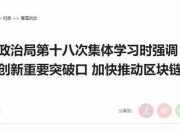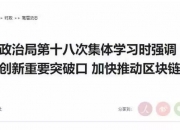“資本運營”一詞雖然產生於我國,但最早的收縮性資本運營實踐活動卻始於西方。1911年,美國新澤西標準石油公司(標準石油公司)因違反了反壟斷法(謝爾曼法),法院判決該公司對子公司進行分立。這可能是最早的收縮性資本運營實踐。自20世紀70年代以來,隨著西方企業從多元化經營戰略轉向“歸核化”戰略,企業收縮性資本運營不斷從被動走向主動,新方法不斷涌現。
, although the word 企業收縮性資本運營是企業資本運營的一種方式。從資本運營對企業規模的影響來看,資本運營可分為內變性資本運營、擴張性資本運營和收縮性資本運營。對於什麼是收縮性資本運營,我國目前還沒有科學、統一的定義。
The corporate condensed capital operation is one way of operating the corporate capital. From the impact of the capital operation on the enterprise’s scope, the capital operation can be divided into 剝離(直接出售)、分離、股權切離、創造定向股票、股份回購、自願清算等方式使企業在一定時間內所掌握的經營資本規模絕對或相對減小,以達到資源優化配置、資本增值最大化或資本損失最小化的一種行之有效的經營模式。企業收縮是一個具有彈性的概念,可以收縮一點點,可以大量收縮,在絕對意義上說也可以收縮至零(如自願清算)。
> 企業收縮性資本運營的方法與技巧有剝離(直接出售)、分離、股權切離、定向股票、股份回購和自願清算
剝離(Divestment或Divestiture)是最早產生的企業收縮性資本運營的一種手段與方法。所謂剝離,是指企業將其所擁有的資產、產品線、子公司或部門出售給第三方,以獲取現金或股票或現金與股票混合形式的回報的一種商業行為。剝離與併購之間存在著一定的聯繫。對出售資產的企業來說是剝離,但對購買該資產的企業來說則是收購,也就是說,一個企業的剝離是另一個企業的收購。
Detachment (Divestment or Divestiture) is a means and method of the first generation of a condensed capital operation for a company. Deleting is the company's sale to a third party of its own assets, , a subsidiary or department to acquire or a combination of shares >. 1、剝離主要有下列種類和形式:
1, stripping mainly of the following types and forms: (1) "A href ="https://wiki.mbalib.com/zh-tw/%E8%87% AA%E6%84% BF%E5%89%A7%A6%B"title = "voluntary stripping"" (2)按剝離企業是否還保有其他經營部門即剝離的程度分為部分剝離和全部剝離;
(ii) The extent to which the removal from the business is partially and completely separated, depending on whether or not the business maintains other branches of the business; (3)按剝離中出售資產的形式分為出售資產、出售產品生產線、出售子公司;
(3) The sale of the property in the form of the sale of the property, the sale of the product line and the sale of the subsidiary; (4)按剝離的內可分為經營性資產剝離和非經營性資產剝離;
(4) Depletion may be divided into and non-commercial assets; (5)按剝離是否與公司層戰略或事業層戰略直接相關而分為戰略性剝離和非戰略性剝離。
(5) Whether or not to strip away from or is directly related to strategic and non-strategic exclusion. 2、剝離的動因:
2, causes of separation: 對通過混合兼併而形成的多元化經營企業進行“修正”;滿足企業戰略改變與轉移的需要;改變企業的公眾形象,提高公司股票的市場價值;滿足企業的現金需要;糾正錯誤的併購;甩掉某些業務經營虧損的包袱;消除負協同效應;提供收購防禦;滿足政府反壟斷法的要求;企業家市場的作用。
“Amendment” to the diversity of enterprises formed through ; meet the need for strategic changes and shifts in business; change the public image of the business and increase the market value of the company's stock; meet the current financial needs of the business; reverse the right and wrong buy-outs; remove the burden of lost and lost business operations; eliminate negative co-ops; provide buy-and-defence protection; satisfy the requirements of the Government's anti-disruption laws; 所謂分離(spin—ofs),是指一個公司將它的某一或某些子公司或部門獨立出來成立新的公司,並將其資產和負債轉移給新建立的公司,然後把新公司的股票按比例分配給母公司的股東,從而在法律上和組織上將子公司獨立出去,形成一個與母公司擁有相同股東的新公司。原先的股東像在母公司里一樣對新公司享有同樣比例的權利,但是新公司作為一個新的法律實體可以擁有不同於母公司的經營哲學和發展戰略。在分離過程中,股權和控制權不會發生轉移,因為新公司的股東與母公司的股東是相同的。母公司在分離過程中不能得到任何現金收入,子公司的資產也無須重新評估,而且原先的股東擁有在母公司和子公司之間是轉換股票還是保留股份的選擇權。
The so-called (spin-ofs) means that a company that separates one or some of its subsidiaries or departments into a new company and transfers its assets and debt to a newly established company, and then distributes the shares of the new company proportionately to 分配股利似的免稅交易。這是分離的經典解釋,可稱之為純粹的分離。除純粹的分離外,分離還有兩種變形,即並股或換股分離(split—ofs)和拆股或解散式分離(split-ups)。換股分離是指母公司將獨立出來的子公司的股份分配給其中的一個或一些股東,交換其在母公司中的全部股份。
This type of transaction is considered to be . This is a classic explanation of separation, which can be described as pure separation. In addition to pure separation, there are two transformations, i.e., shares or swaps between shares (split-ofs) and shares (split-outs) or dissolutions. 解散式分離(拆股)是指母公司分拆為幾個獨立的公司,同時將各個獨立公司的股份分配給其股東,原母公司解散。分立的動因主要有:消除負協同效應,釋放“被壓縮了的價值”;滿足公司總體戰略的調整;改善激勵機制,降低代理成本;消除內部衝突;作為反併購的武器;有利於企業利用或擺脫法律、法規的限制。
Disbandment (diversion) means that the parent company into separate companies, while distributes to its shareholders and dissolves the parent company. 股權切離(equity carve-outs)又叫分拆上市。
( >equity carve-outs) is also called . 它是指母公司設立一新公司,並將母公司資產的一部分轉移到新公司去,母公司再將新公司的股權的一部分對外出售。認購這些股權的人可以是母公司的股東,也可以不是母公司的股東。股權切離相當於母公司全資所有的子公司部分普通股的首次公開發售(IPOs),也被稱為“字股換母股的IPOs”。
It refers to the creation of a new company by the parent company and the transfer of a portion of the parent company's assets to the new company, and the sale of a portion of the new company's equity rights by the parent company. The owner of these shares may be either the owner of the parent company or not the owner of the parent company's shareholding. The equity is cut off from the first public sale of (IPOs), also referred to as “the first public sale of the parent's shares”. 新設公司股權的公開首次發售就好像是母公司股權的二次發售。股權切離方式介於資產剝離和純粹的分離之間,即資產剝離能使公司獲得現金收入,但不產生新的法律實體。純粹的分離導致新的法律實體的產生,但沒有現金流入,僅僅是權益的再分配。而股權切離既使母公司獲得現金回報,又產生新的法律實體。因此,可以把股權切離看作是企業分離的衍生形式。股權切離的主要動因是:開闢新的融資渠道;獲取資本溢價;推動股價上漲;有利於外部監督和降低激勵成本。
The opening of the new company's shareholdings for the first time was sold . The equity cut-off was in the range of the parent's equity
定向股(tracking stock或targeted stock)是由美國通用汽車公司創造的。所謂定向股,是指一種其價值與公司內特定業務單位(通常為子公司、事業部、產品線、業務單位)的增長特征和經營績效相聯繫的一種特殊的公司普通股。字母股(Alphabet Stock)是定向股的一種特殊形式。定向股的創立是根據公司的不同業務情況,把整個母公司的經營分成兩個或更多的由公眾持股的經營單位,公眾持有的不僅僅是反映母公司整體價值的單一普通股,而且是各個經營單位的定向股票。
(公司治理和控制權的觀點來看,定向股的創立並不改變公司董事會的構成以及母公司對個經營單位的管理控制權。字母股是定向股的一種特殊形式。字母股是定向股的亞類,但許多金融界的業內人士將二者常常混用。字母股比定向股的主業清晰的程度要低的多,而且在資產處理和控制權方面享有優先權。例如,在公司清算時,按字母股的字母順序來分配所得收益。創立定向股的動因主要是:保持協同效應;減少信息不對稱、增加資產透明度、釋放在多元化經營中被壓縮隱藏的價值;績效報酬,會大大減少股東與管理人員之間的代理成本;相對專業化經營;增加籌集外部權益資本的彈性或者把定向股當作貨幣以備將來收購其他企業之用。
From and the point of control, the creation of the targeted share does not change the composition of the company's board of directors and the management control of the parent's own business. The Alpha Unit is a special form of "https://wiki.mbalib. com/zh-tw/%E5%B5% of the targeted unit" and many insiders of the financial sector =5% of the targeted unit's "B8%B%E2%2%" employment and 所謂兩階段分離法,又叫切離加分離(Spin—out),是指母公司對子公司的分拆分為兩步:母公司先將子公司的不超過20%的股份進行首次公開發售,之後不久(一般為一至三年)便將剩餘的部分按比分配給現有股東。第一階段20%的限制是為了保持交易免稅的狀態。公司為什麼選擇兩階段分離法而不選擇百分之百的純粹分離的原因尚不是很清楚。一個可能的原因是為了避免被分離的子公司在最初的幾個月內遇到股價下跌的風險。這個道德帶來的股價下跌通常與大型機構投資者證券組合平衡活動有關,因為它們可能不想持有在分離交易中被母公司分離出去的子公司的股份。
, also https://wiki.mbalib.com/zh-tw/E5%E5%88%E6%B%E0%E5%E5%E2%2%" = 1990年代中後期以來,西方企業收縮性資本運營出現了混合運用各種方法的趨勢,即將剝離、分離、股權切離、創立定向股四種方法中的至少兩種相結合。
In the second half of the 1990s, a combination of different methods emerged in the run-up to the condensed capital of Western businesses, combining at least two of the four methods of stripping, dissociating, severing equity, and creating a targeted equity. 例如,對某一個指數基金公司來說,如果某個被分離的子公司不再是該指數的組成部分,則公司經理就會被要求出售該子公司的股票。在兩階段分離中,少量的股權切離使母公司能夠為新股票的發行創造—個有序的市場,避免像分離中那樣一下子充斥大量的股票。此外,由於其股權切離是以IPOs的形式,投資銀行通常會樂於支持和幫助銷售新發行的股票。
For example, for a , if a separated subsidiary is no longer part of that index, the company's manager will be required to sell the stock of the subsidiary. In two tiers, a small equity cut-off enables the parent company to create new stocks - an orderly market that avoids a massive stock accumulation of stocks like that of the split 9F%BA%E9%E9%C1%C" investment fund. In addition, 股份回購(stock repurchase),是指上市公司利用盈餘所得後的積累資金(自由現金)或債務融資,以一定的價格買回本公司對外發行的部分普通股,以作為庫藏股或進行註銷的行為。股份回購不僅僅是純粹改變公司資本結構的金融交易,它使公司現金資產減少,因而是公司資產收縮性重組的組成部分。股份回購有兩種基本形式:一是典型的股票回購,即公司用現金購回發行在外的股票;二是採用遠期合約,即公司承諾在將來某一時期以某一固定價格購回本公司的股票。股份回購的主要類型有:
(stock repurchase >5% of the > (1)固定價格標購((riPs);
(1) (riPs); (2)荷蘭式拍賣回購(DAs);
(2) (DAs); (3)可轉讓選擇權(fPR);
(3) (fPR); (4)公開市場回購(OMRs)。公開市場回購是最常用的股份回購類型,使用頻率是其他三種的1O倍。但是,與其他類型比起來,公開市場回購只能購回部分發行在外的普通股,大約為5%,而固定價格標購卻可以購回16%。
公司回購股份的動因主要是:間接分配利潤可以避稅;獲取分配多餘現金方面的靈活性;減少權益資本,提高負債/權益比率;作為激勵高級管理人員的一種手段;用回購股份的方式確保股東的控制權。
due mainly to the fact that: on the allocation of excess cash 清算(Liquidation)是指公司無須繼續存在或者因資不抵債無法存續而結束其“生命”的過程。公司清算的最終是公司資產要變賣,其收益首先用來償還債務,剩下的分配給股東。隨著清算的結束,公司就宣佈解散。從出售資產的角度來看,剝離是清算的特殊情況,是部分清算。公司清算分為強制性清算和自願清算。強制性清算即破產清算,是公司受法院強迫(通常由債權人要求)的清算;自願清算是由公司股東發起的清算。公司自願清算的前提是企業必須解散,但並非所有的企業都必須經過清算程式。從解散到公司最終消亡有一個過程,這就是自願清算的過程。
means that 8% E/a> means that the company's assets = uninsolved 自願清算的原因有兩種:客觀原因和主觀原因。因某種原因而解散是公司自願清算的客觀原因。
自願清算的主觀原因為:當公司分拆出售的價值超過公司發行在外的所有證券、債務和法律義務的市場價值時,清算對證券持有人最有利。公司一直虧損還有償債能力時,清算對債權人比較有利。外部接管的威脅也可能促使公司經理進行清算。公司股東對公司未來如何管理的意見不一也可能導致公司清算。此外,自願清算還是企業退出某行業的方式之一。
The main reason for the voluntary liquidation is that when the value of the sale exceeds the market value of all of the securities, debts and legal obligations issued by the company outside, the liquidation is in the best interest of the holder of the certificate. The company has been losing . The threat of external takeover may also prompt the company’s management to settle. 我國企業收縮性資本運營,是從1993年開始的。當時,我國正開始國有企業的股份制改造(俗稱“改製”)。對非生產經營性資產進行剝離,讓企業真正擺脫辦社會的負擔,輕裝上陣,是國有大中型企業股份制改造成功的重要條件。一大批進行股份制改造的國有企業,陸續、分步驟地對非經營性資產進行了剝離。此後,許多非改製的國有企業,也把剝離非經營性資產作為搞活企業的重要手段。還有一些國有企業,通過分拆的方式,在香港或其他國家上市。黨的“十五”大以後,收縮性資本運營逐漸為上市公司所採用,而且有不斷上升的趨勢。
Eref , , 現在看來,收縮性資本運營已成了上市公司日常經營的組成部分,主要反映在三個方面:
Now, the condensed capital operation has become part of the day-to-day operations of listed companies and is reflected in three main ways: 1.資產剝離被上市公司廣泛採用
1. Extortion of assets is widely used by listed companies 1998年,上市公司公告剝離129次,占1998年上市公司企業重組總數和總金額的20% 和2l% ,另外在上市公司資產出售上,出售股權94起,占資產出售總數73% ,出售實物資產35起,占上市公司出售資產總數的27% 。1999年,公告剝離190次(其中剝離股權資產147次,剝離其他資產43次),實際發生187起,涉及金額96.1億元,分別占1999年上市公司企業重組總數和總金額的16.8% 和20.8% 。2001年,公告的資產剝離或所擁有的股權出售395次,占當年上市公司資產重組的27.1%。此外,作為剝離特殊實現形式的管理層收購(MBO)和員工持股制度也正在開展之中。
In 1998, the listed company announced that it had cut off 129 transactions, representing 20 per cent and 2 per cent of the 1998 listed company's total portfolio, and sold 94 shares, accounting for 73 per cent of the total, and sold , and 2.公司分拆上市逐漸展開
2. The company's breaking up into the market. 1996年和1997年,一汽集團先後兩次分拆上市成功。1997年6月,深圳賽格集團分拆上市成功。企業分拆上市尤其是尚未上市的集團公司分拆上市,目前已形成一種資本運作模式,得到市場的認同;而上市公司分拆上市行為還剛開始,隨著國有特大型企業改革的不斷深入,上市公司分拆上市在1998年以來形成了熱點,並作為上市公司資產重組的一種重要方式被市場推廣。
In June 1997, , a group of companies succeeded in breaking up the market. 2000年10月31 El,由同仁堂股份有限公司分拆並控股的同仁堂科技發展股份有限公司(簡稱同仁堂科技)在香港創業板閃亮登場,中國資本市場1 000多家上市公司中的分拆上市第一股產生了。神州數位也於2001年6月1日在香港主板市場分拆上市。兩者分拆的成功,標誌著內地主板市場上市公司已經開始啟動其分拆上市的業務,將為國內公司收縮性資本運營帶來新的思路。同仁堂和神州數位分拆上市的成功效應,必然會對內地其他上市公司開展這方面的業務產生深遠的影響,並把這種影響傳遞到內地證券市場上。
3.股份回購進入積極探索與嘗試階段
3. Shares buy back into active exploration and trial stages 1992年,大豫園兼併小豫園時,採用協議回購方式把小豫園的所有股票(包括國家股、法人股、社會公眾股)悉數回購併註銷。有人認為這可以看作是中國股市第一例為了合併而實施股份回購的成功個案。1994年10月30日,陸家嘴臨時股東大會決議通過了國家股減資的方案,由此陸家嘴成為我國第一家協議回購本公司股票並註銷股份的上市公司。1996年4月19日,廈門國貿公司董事會提出了以股份回購的方式來減資及變更股本結構的議案。1999年5月12日雲天化董事會發佈了《關於回購併註銷部分國有法人股的公告》,如期完成回購任務。1999年12月16日,申能股份發佈了回購部分國有法人股並註銷股份獲准的公告,並如期完成。氯鹼化工在1999年提出了回購公司B股,又掀起了一波關於B股回購問題的熱潮。
In 1992, at the time of the adoption of the agreement to buy back all shares of the small park (including the National Unit, , 1.企業擴張與收縮的辯證統一關係
企業擴張與收縮,猶如發動機里活塞的運動,具有辯證統一的關係:
Business expansion and contraction, like pistons, have a single relationship: (1)擴張引起收縮。任何形式的購併都有一個“度”,當併購擴張超過這個“度”時,便會導致規模不經濟,平均成本上升,利潤率下降,企業績效降低。收縮就是在這種擴張超過了一定“度”的情況下,為了優化資源配置而產生的。
(1) Extension causes contraction. Any type of acquisition has a "degree" that would lead to , (2)收縮是擴張的基礎,是為了以後更好的擴張。為了追求El後更大規模的擴張,企業有時必須以退為進,先“消腫”,剝離與企業發展戰略不相容的某些業務或部門,然後輕裝上陣,擴張勢頭可能更猛。因此,不僅以併購為主要內容的擴張性資本運營可以使企業得到發展,而且以剝離(出售、分立、分拆上市、跟蹤股、股份回購)為主要內容的收縮性資本運營也可以推動企業的發展。
In pursuit of the larger scale of post-El growth, firms sometimes have to “dissipate” from Some of the industries or sectors that are incompatible with the enterprise development strategy /a>, which could easily be scaled up. Therefore, not only the expansion of the capital, which is the main element of the acquisition, can enable the business to develop, but also the winding-up of the capital that is the main component of the business (sale, split, split, market, track, shareback). 2.收縮性資本運營是我國多元化企業回歸主業的必然選擇
The condensed capital operation is the inevitable option for my country's diversified enterprises to return to their home countries. 20世紀80年代初,西方的多元化戰略傳到了中國。廣東省的企業率先實施多元化戰略。企業通過多元化經營來成長的戰略有其合理性和必要性。但是,多元化經營有一些前提條件,而且應當進行相關多元化,否則,不僅不會取得預期的成功,甚至會導致失敗。
In the early 1980’s, the Western strategy of pluralism spread to China. Businesses in Guangdong led the strategy of diversification. 2O世紀90年代,我國部分著名企業推行多元化戰略取得了一些效果,於是許多企業紛紛仿效,不斷擴大經營範圍。然而事與願違,不論是民營企業、國有企業還是上市公司,多元化帶來的利益並不明顯,成功與失敗幾乎各占一半。不論是西方企業還是我國企業多元化經營實踐都證明,無關聯的多元化經營會招致企業經營失敗。
In the 1990s, some of our well-known companies had some effect in pursuing a strategy of diversification, so many of them followed suit and expanded the scope of their operations. But, whether , having a business or a listed company, the benefits of pluralism are not obvious, and success and failure are almost half the benefits. 因此,我國目前正在進行無關多元化經營的企業,無論是國有企業還是非國有企業,上市公司還是非上市公司,都應該在全球企業收縮性戰略的背景下,對混合企業進行剝離或分離或分拆,適當的收縮戰線,降低混合多元化的程度,“回歸根本”,強化核心業務,培養和提升企業核心能力,不斷把企業做大、做強。因此,收縮性資本運營是我國多元化經營的企業回歸主業的必然選擇。
As a result, our country is currently engaged in unbridled enterprises, whether State-owned or non-State-owned, listed or non-listed, at 3.收縮性資本運營是上市公司經營活動的重要組成部分
3. Condensed capital is an important component of the activities of listed companies 上市股份公司離不開資本運營,而作為資本運營重要組成部分的收縮性資本運營,在上市公司的運作中起著非常重要的作用:
Listed stock companies do not operate independently of the capital, while the condensed capital operating as an important part of the capital operation plays a very important role in the operation of listed companies: (1)糾正錯誤的併購;
(i) Corrected and misdirected purchases; (2)減輕債務負擔,改變財務狀況;
(2) Reduce the debt burden by changing the financial situation of ; (3)剝離非相關業務,回歸主業或者調整主業;
(iii) Detaching from non-related business, returning to the main business or restructuring the main business; (4)盤活資產,套取現金;
(4) active assets, cash collection; (5)開闢新的融資渠道,獲取資本溢價;
(5) Opening new access to the capital premium of ; (6)消除負協同效應,釋放“被壓縮了的價值”;
(6) elimination of negative co-effects and release of “contracted value”; (7)作為反購併的武器;
(7) as a counter-poding weapon; (8) Increase of per share adjustment of improvement of (9)消除內部衝突,改善激勵機制,降低代理成本;
(9) Elimination of internal conflicts, improvement of incentives and reduction of agency costs; (10)滿足公司戰略改變與轉移的需要。
(10) Satisfactory with the need for 4.收縮性資本運營在我國國有企業改革中具有重要作用
4. Condensed capital operations play an important role in business reforms in our country. 行業不同,採用的資本運營方式也應該不同。一般來說,資產專用性高或高度互補或規模經濟顯著的行業的企業適合擴張性資本運營,而那些資產專用性不高或相互獨立或規模經濟不顯著的企業,對其進行分立、分拆反而更好。
In general, 對屬於後者的國有大中型企業來說,擴張性的資本運營會帶來邊際收益遞減甚至收益為負,而分立式的收縮性資本運營卻可以使邊際收益遞增或帶來正的收益。我國許多省的機械行業的國有企業,進行了分立式重組,並取得了成功,如特大型國有企業“二汽”等。因此,收縮性資本運營,就為企業改製提供了一種新模式。
In the case of countries with backward ownership with large and medium-sized enterprises, the expansionary capital operation will bring
我國當前正處於企業併購的熱潮之中,企業對收縮性資本運營的各種方法和技巧還相當陌生,因而不可避免地會對收縮性資本運營產生種種誤解。例如,很多人認為只有那些經營業績不佳的企業才進行資產剝離。
Our country is in the midst of the current boom in corporate mergers, and companies are very unfamiliar with the methods and techniques of condensed capital, which inevitably lead to misunderstandings about the condensed capital operation. For example, many people think that only firms with poor performance do so. 其實,收縮性資本運營作為資本運營的一種類型,經營績效差的企業可以使用,經營績效好的企業也可以採用。二者都可以將某些經營不善的部門或業務或產品線轉讓出去,以優化企業內部的資源配置,調整企業經營結構和產品結構,強化核心業務,培育和提升企業核心競爭力。許多企業進行剝離以後,雖然其固定資產和流動資產規模有所減少,但資本總的規模沒有變,而且其總體績效還會提高。
In fact, can be used, as well as successful businesses. Both can transfer some of the poorly run departments or businesses or products 此外,收縮性資本運營還通常與擴張性資本運營配合使用:
In addition, condensed capital camps are often used in conjunction with expanded capital: 一方面,企業兼併的同時也可能出售某些資產,以獲得急需的現金收入;
On the one hand, may also sell certain assets to get current income /a>; 另一方面,企業剝離經營不佳的資產,獲得現金流人,用來擴張其主業。因此,在世界經濟日益一體化的今天,對任何一個企業來說,既要精於擴張性資本運營,又要善於收縮性的資本運營。只有這樣,才能把企業做大、做強。
Businesses, on the other hand, exploit their poor assets and gain access to cash streamers to expand their industries. Thus, today, when the world economy is becoming more and more homogeneous, it is important for any enterprise to be both proficient and proficient.
注册有任何问题请添加 微信:MVIP619 拉你进入群

打开微信扫一扫
添加客服
进入交流群




















发表评论